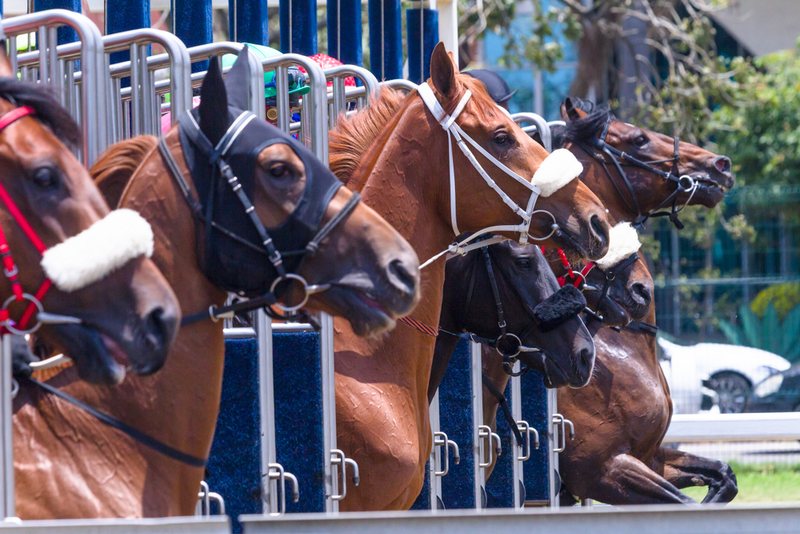The horse racing market is at the crossroads. The clattering horses and age-old custom of the race track are now joined with the high-speed comfort of online betting. As the global horse and sports betting market is expected to increase at a phenomenal rate of 11.06% CAGR up to 2033, the question of whether to bet or not is irrelevant to both amateur and professional gamblers, but how.
Would you feel the air of a real race, ticket in hand, or take advantage of the mighty data of a website in the comfort of your own home? This ultimate 2025 guide is the dissection of the details of on-field and online horse betting, indicating that it is not a competition between the two in the future, but an effective partnership that is transforming the sport.
The Racetrack Experience: More Than Just a Bet
The magic of being at the racetrack cannot be undone. It is a visual experience that no application can ever recreate: watching the mighty thoroughbreds on the paddock, hearing the crowd screaming as the horses go round the last turn, and the time-honoured tradition of redeeming a winning ticket. This field trip is still the cultural and social core of horse racing.
The Parimutuel System: The Economic Engine
The basis of on-track betting is the parimutuel system, which means betting against each other. All bets of a particular type are combined in this model. The track earns a percentage (the “takeout), and the rest of the funds are shared amongst the winners. This takeout is the lifeblood of the whole horse ecosystem, and helps to pay all the prize money (purse) through to breed development and track maintenance.
The beauty of the parimutuel system is that it may bring high returns, particularly on long shots. The amount paid out depends upon the amount of money in the pool; therefore, a winner that is ignored can lead to a huge payout, much bigger than would have been provided under fixed odds.
Community and Tradition
On-field betting is an event. It is a family affair, a social centre to society, and an entertainment event that unites people of all classes. Handicapping on the track is a physical manual process. Bettors can see the condition of the horse, determine their jockey’s confidence, and experience the effects of weather and track conditions in real time. This virtual world offers an entertainment benefit, promoting betting beyond just being a mere transaction to a day of recollection.
The Digital Revolution: Betting in the Palm of Your Hand

Although the track performs tradition, there is no comparable convenience and power in horse racing betting online. The emergence of Advance Deposit Wagering (ADW) websites such as TwinSpires, FanDuel Racing, and bet365 has placed the racetrack at your fingertips, and is a legal business in more than 40 states in the United States.
Unmatched Convenience and Accessibility
The primary advantage of online betting is that it can be done at any time and from anywhere. You can bet sitting on your couch, on your way to a certain place, or even on the grandstand of the track itself. This accessibility is augmented by the characteristics that characterise the contemporary online experience:
- Live HD Streaming: View the races of the world in real time on the phone or tablet
- Instant Payouts: Although a track may require you to buy a ticket through a window, numerous Internet resources will allow you to make withdrawals in a few minutes or hours through digital wallets and even cryptocurrency
- Global Reach: Place bets on races taking place in any part of the country or even in any other part of the globe, all through one application
Fixed-Odds and Data-Driven Decisions
The entry of fixed-odds betting is a game-changer in the online space. You lock in your possible winnings when you place your bet, unlike the variable nature of the parimutuel system, which turns out to be variable. This will be attractive to a new generation of sports bettors who prefer some form of certainty and predictability.
Also, handicapping is now democratised by the online world. Bettors used to use experience and intuition, but currently have access to advanced AI-based tools. These systems process enormous amounts of data, such as the history of a horse, jockey records, the state of the track, and even a genetic inclination, and produce effective predictive measures. This enables even the amateur fan to make strategic decisions based on data, which was previously only done by experienced professionals.
A Tale of Two Bettors: The Changing Face of Horse Racing
The two-faced nature of on-field and online betting has resulted in two different bettor types that still intersect.
The old school gambler lives off the field experience. They appreciate the social side, tradition, and the watching side of the handicapping. Their gambling is usually an extension of a bigger entertainment process.
The contemporary online punter is an informed, tactical, and efficiency-conscious person. He or she is more likely to be a middle-aged male living in cities and who bets regularly. They capitalize on AI to gain an advantage and anticipate a smooth and personalised online experience with instant access to their fortune.
Due to the emergence of AI, the information gap between the insiders of the industry and the common people has been narrowed. The more bettors use the information to make well-informed bets, the more efficient the market would be, i.e., the odds would be closer to the actual probability of a horse winning the race.
Technology at the Forefront: From Tote Boards to the Blockchain

The linkage between the old way and the digital world is technology. The primitive totalisator (tote) system, which was once a mechanical marvel, is now a safe software platform that serves as a trusted, centralised registry of all bets, a predecessor to the current blockchain technology.
Today, this foundational tech is being augmented with exciting innovations:
- AI and Advanced Analytics: As explained, AI is the future of handicapping, and it is turning it into a science rather than an art
- Augmented and Virtual Reality (AR/VR): Businesses are creating VR games that allow you to become the owner, trainer, and racer of virtual horses, and AR overlays can allow you to see real-time information about the horses on a real-life race course
- Blockchain and NFTs: This is a new technology that comes with a higher degree of transparency and interaction. Blockchain is able to provide the immutable records of the horse’s pedigree and health, and Non-Fungible Tokens (NFTs) are establishing new frameworks of ownership of digital horses, where people can purchase and breed horses in a virtual race and then trade them with a real-world result
The Future is Hybrid: How Tradition and Tech Will Coexist
The professional forecast concerning 2025 is evident: there is no competition between on-field and online betting. They are two sides of the coin, and they will get integrated with time. The future of horse racing is in the form of a hybrid model with each channel doing what it does best.
Race tracks will become the best places of entertainment. They will use technology to augment the live experience and not to take away the live experience. Think of mobile betting from the comfort of your seat, on-site digital offers exclusive to you, and augmented reality, which would take you closer to the action. The fundamental product will be the unmatched spectacle of live racing.
Internet websites will become more than gambling devices. They will be data-intensive, all-around engagement centres. The victorious platforms will incorporate AI handicapping, VR offerings that are immersive, and blockchain-based ownership frameworks to attract and keep the new generation of fans who want a more interactive experience.

